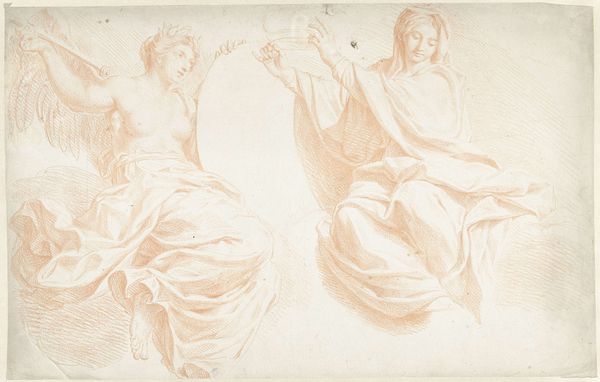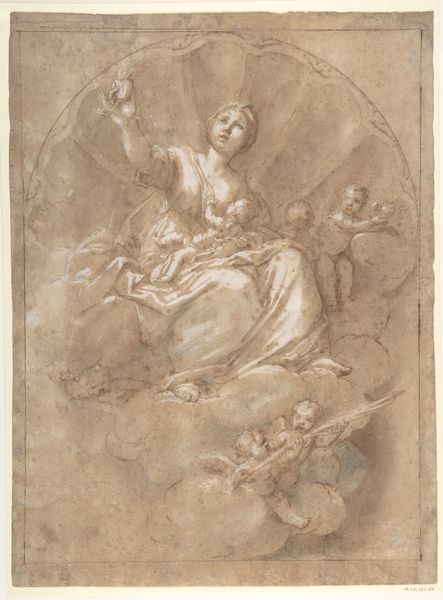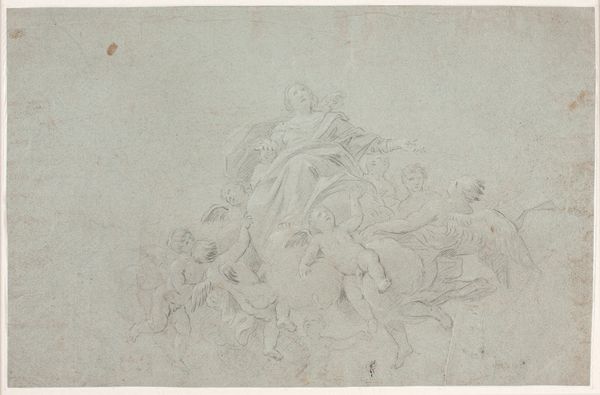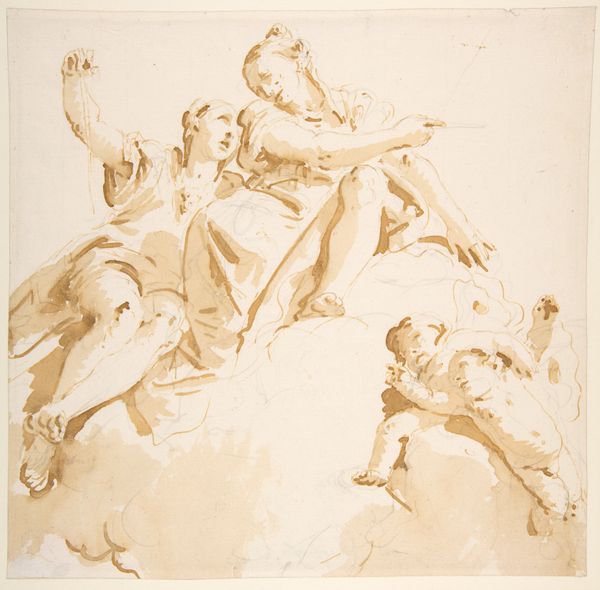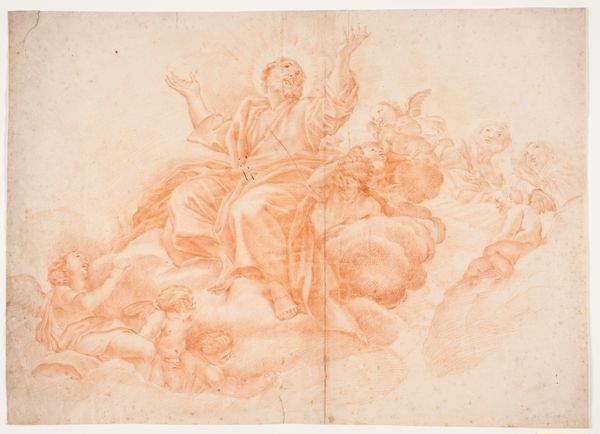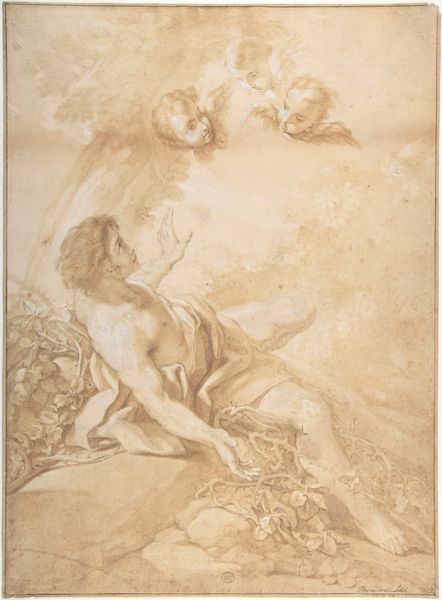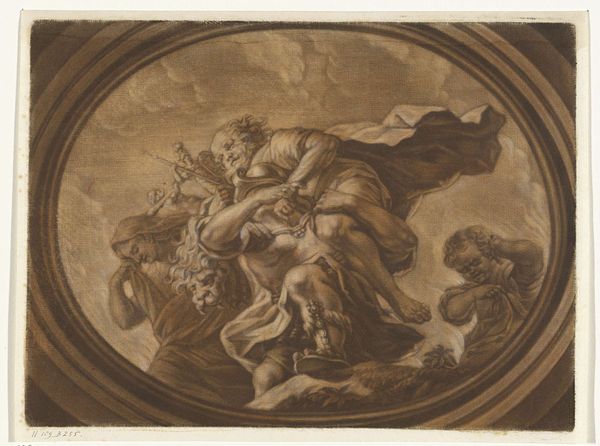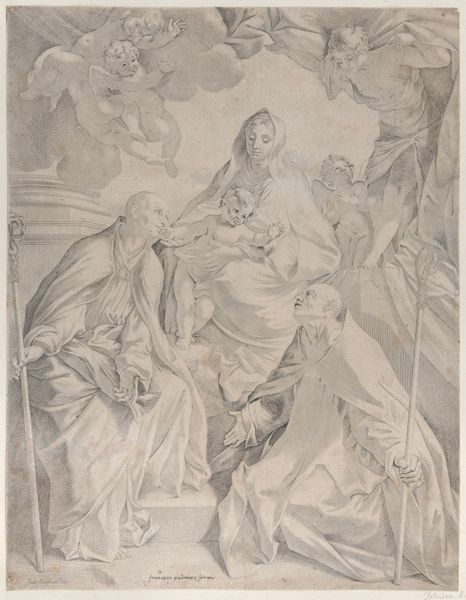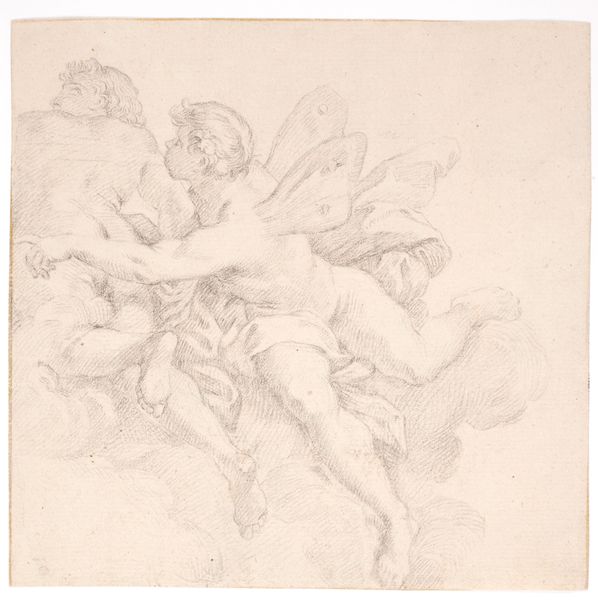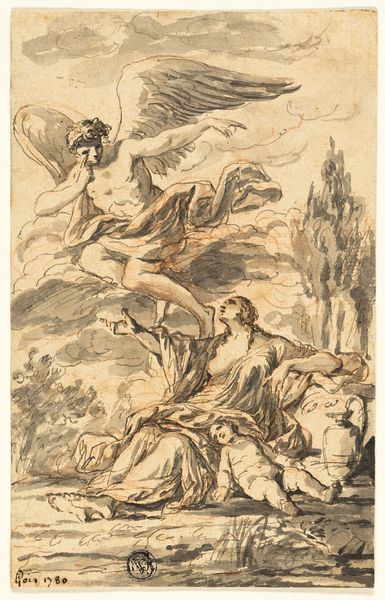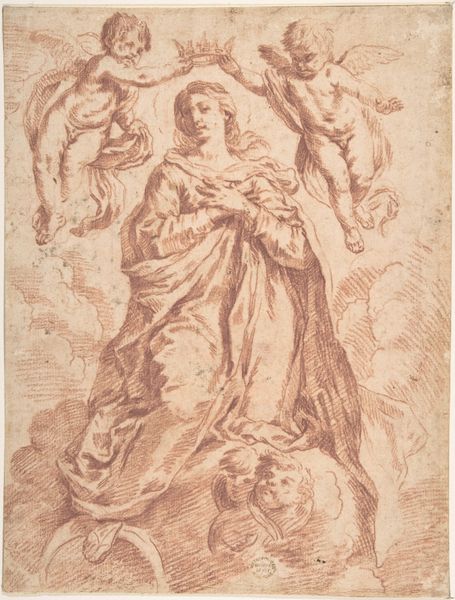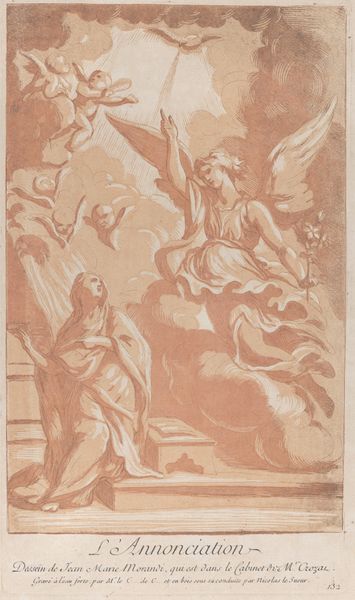
Assumption of the Virgin (after Carlo Maratta?) 1600 - 1700
0:00
0:00
drawing, print, paper, pen
#
drawing
#
baroque
# print
#
figuration
#
paper
#
11_renaissance
#
pen
#
history-painting
#
italian-renaissance
#
angel
Dimensions: 8-1/4 x 10-9/16 in. (21 x 26.9 cm)
Copyright: Public Domain
Curator: Here we have "Assumption of the Virgin," tentatively attributed to Carlo Maratta, created sometime between 1600 and 1700. It’s rendered in pen and brown ink on paper. Editor: The initial impression is striking – a powerful sense of ascension and grace. There is a warm sepia tone that gives a sense of reverie. The swirling composition immediately directs my gaze upward, creating a feeling of transcendence. Curator: The Assumption, of course, is a core theme within Catholic art. We see it depicted repeatedly throughout the Renaissance and Baroque periods. This piece, especially considering the attribution to Maratta or his circle, fits squarely within the tradition of celebrating female spirituality in what was largely a male-dominated world of faith leadership. It visualizes an aspirational state and subtly empowers those who, like Mary, might challenge social hierarchies. Editor: Absolutely, and consider the recurring symbols at play here: the upward gaze, the halo effect achieved through lighter ink suggesting divine light, the chorus of cherubic figures...These aren't just artistic choices but coded visual cues speaking to deeply held beliefs about salvation and the divine feminine. Curator: Yet, within the context of 17th century Rome, art served more than religious devotion. It solidified papal power. Representations of Mary reinforced existing hierarchies of class and faith. The accessibility of the divine was managed by religious powers through these types of images, which served to control society. Editor: An interesting counterpoint, certainly. But also, think about the psychology of witnessing such images in that era. The soft lines, the ethereal qualities achieved with simple pen strokes. Even for those who were structurally disenfranchised, viewing Mary in this elevated state likely triggered feelings of hope. This kind of iconography connects across cultures as an exploration of mortality. Curator: It’s interesting to think of the dialogue it created then, versus now. Perhaps our roles have simply switched as those looking at it now who also bring with us new cultural assumptions and expectations. Editor: Ultimately, I think we both agree this artwork does more than meets the eye in the first impression. Curator: I think it definitely forces one to reckon with both hope and hierarchy, even in the same glance.
Comments
No comments
Be the first to comment and join the conversation on the ultimate creative platform.
